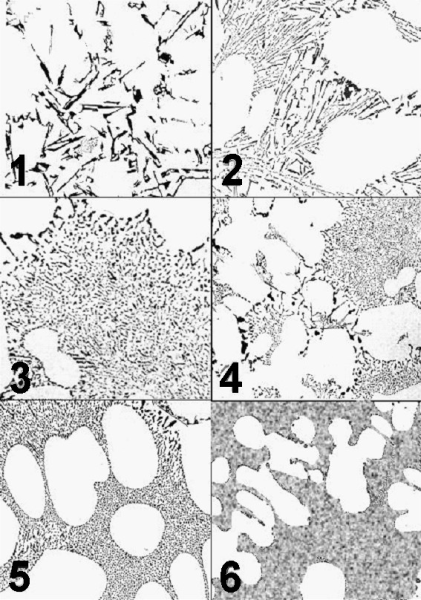Eutectic silicon
The silicon which is precipitated in the eutectic in hypoeutectic or near eutecticaluminum-silicon alloys.
The silicon present in the (Al+Si) eutectic can appear in various forms or modifications which can be used in a targeted way, for example, in modification (Figure 1).
In principle, the eutectic silicon appears in the metallographic specimen in lamellar form, however, if several ppm of phosphorus are present, it appears in granular form.
Phosphorous stabilizes the granular formation and disrupts modification (similar structure to Figure 1-1.). In the past, as the phosphorus in unmodified Al-Si alloys could not be removed completely, the granular formation was incorrectly seen as the norm. If elements with modifying effects such as strontium or sodium are added, the eutectic silicon tends more and more to form in a fine lamellar to a fine fibrous way. Conversely, antimony stabilizes the lamellar formation and, in the past, was used frequently, particularly in wheel casting. A heat treatment with a solution annealing treatment molds the eutectic silicon into a round shape. In contrast to this, in hypereutectic Al-Si alloys, the primary silicon precipitates as the first phase.
Essentially, the following have an effect on the formation of the eutectic silicon:
- Type of modifier (Na, Sr, but also Ba, Sb)
- Impurities in the melt (P, Ca...)
- Amount of modifier
- Solidification speed (the faster the solidification and the thinner the walls of the casting, the finer the eutectic silicon precipitates)
- Silicon content
- Heat treatment condition (see Material condition, Heat treatment of hardenable aluminum alloys)
Further references:
Aluminum gravity die casting alloys
Ductile die casting alloys
Eutectic alloy


